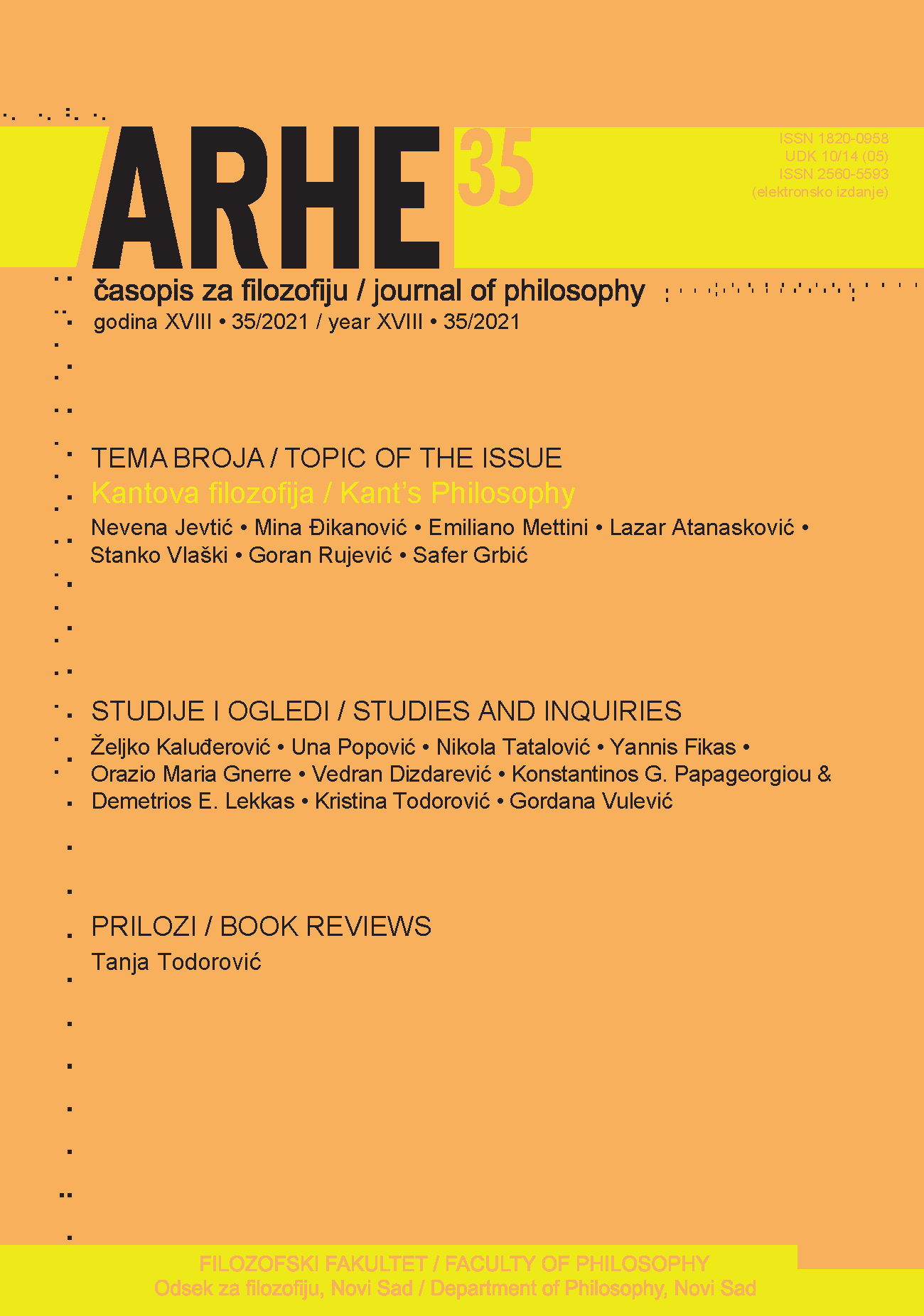Ono neograničeno načelo
The Boundless Principle
Author(s): Željko KaluđerovićSubject(s): Metaphysics, Ancient Philosphy
Published by: Филозофски факултет, Универзитет у Новом Саду
Keywords: Anaximander;first extant fragment;τὸ ἄπειρον;principle;oppositions;material cause;
Summary/Abstract: In this paper the author discusses the various modalities of access to the only extant Anaximander's fragment (DK12B1), which is also regarded as the first written document in the history of Western philosophy. Aristotle's heritage is the main source for studying the views of this Milesian thinker, similar as it was for Thales. Although, Anaximander's name was mentioned only four times in Stagirites' works, it is evident that "successor and pupil of Thales" was referred or alluded more often. The paper, first of all, explores possible definitions of the key concept of his philosophy τὸ ἄπειρον, which generally range from apeiron being "something in between" (τὸ μεταξύ or τὸ μέσον) elements, to the one that it is "a mixture" (μῖγμα) of all the elements. In addition the topic is being discussed of whether the apeiron is something that is "spatially boundless", or is it something that is "qualitatively indefinite". The author, at the Aristotle's trail, analyzed, whether "the boundless" is purely a monistic principle, or whether Anaximander since being placed in a group of philosophers together with Empedocles, Anaxagoras and Democritus, is situated as someone who could no longer speak of a single principle of everything. The author concludes that, regardless of doubts and disagreements among commentators over the nature of ἄπειρον, it is certain that the Anaximander's "the boundless" should be interpreted as matter and classified into the so called category of material causes.
Journal: Arhe
- Issue Year: 2021
- Issue No: 35
- Page Range: 163-182
- Page Count: 20
- Language: Serbian

